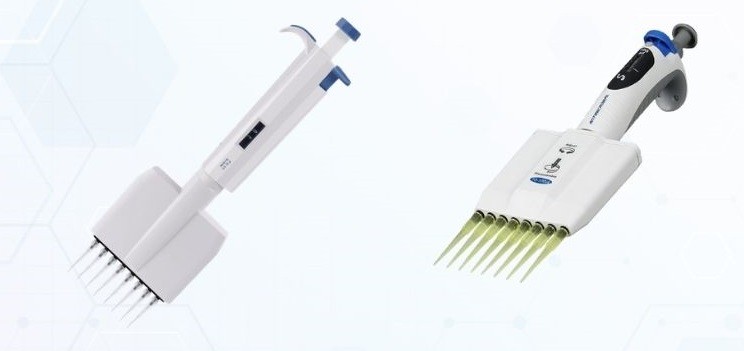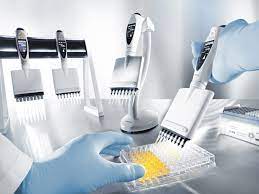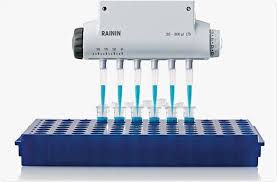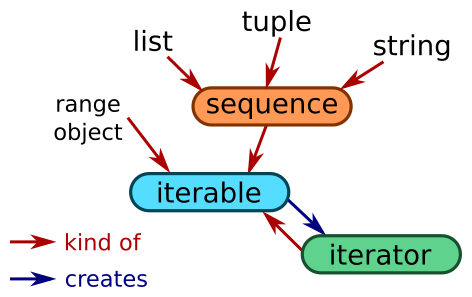How to use Multichannel Pipette: 5 Best Pipette Tips

In modern life science laboratories, accurate and efficient liquid handling is crucial for successful experimental workflows. Multichannel pipettes have emerged as indispensable tools, revolutionizing the process of transferring reagents between wells and plates. In this post, we will explore the benefits of using multichannel pipettes and how they can significantly enhance laboratory efficiency.
A multichannel pipette is an upgraded version of the traditional pipette, a handheld instrument used to dispense precise volumes of liquids in multiple channels simultaneously. These pipettes are particularly useful for high-throughput tasks and are offered in manual or electronic models, with options for 8 or 12 channels. Rainin provides ergonomic, multichannel pipettes that ensure consistent sample pickup across all channels. Additionally, they offer an adjustable spacer variant that enables accurate pipetting from tubes by simply adjusting it with a quick wrist motion.
What is a multichannel pipette?
A multichannel pipette, also known as a multiple channel pipette, is a commonly used mechanical handheld tool in life science laboratories. It allows for the simultaneous transfer of small liquid volumes through individual tips using either 8 or 12 channels. This feature enhances the efficiency of workflows involving 96- or 384-well plates by enabling parallel sample uptake. Multichannel pipettes are offered in manual and electronic variants, and the choice between them depends on factors such as the desired volume transfer, required precision, and level of repetition needed.
What is a pipette?
A pipette is a laboratory tool used to measure and transfer precise volumes of liquid. It consists of a narrow tube with a tapered tip, and liquid is drawn into or dispensed from the pipette using a piston or plunger mechanism.
Simultaneous Transfer:
One of the key advantages of multichannel pipettes is their ability to transfer liquids simultaneously across multiple channels. Compared to single-channel pipettes, which require sequential transfers, multichannel pipettes can accelerate liquid transfer up to 12 times faster. This time-saving feature greatly streamlines workflows and boosts productivity.
High-Throughput Applications:
Multichannel pipettes are particularly valuable in high-throughput applications that involve 96- or 384-well plates. With their multiple channels, these pipettes allow for efficient and precise dispensing of small liquid volumes into numerous wells simultaneously. This capability significantly reduces the time and effort required for plate preparation.
Ergonomic Design:
Laboratory professionals often perform repetitive pipetting tasks for extended periods of time. Here, the ergonomic design of Rainin multichannel pipettes shines through. Rainin prioritizes user comfort, incorporating ergonomic features that reduce strain and fatigue. This design consideration promotes a more comfortable and efficient pipetting experience, even during prolonged use.
Superior Sample Pickup:
The accuracy and reliability of sample pickup are critical in laboratory experiments. Rainin multichannel pipettes are renowned for their superior sample pickup across all channels. This ensures consistent and precise aspiration and dispensing of liquid samples, minimizing the risk of errors and ensuring reproducible results.
Versatility and Options:
Multichannel pipettes are available in both manual and electronic models, providing options that cater to different preferences and requirements. Researchers can choose the appropriate model based on factors such as the desired volume transfer, required precision, and frequency of use.
When should I use a multichannel pipette?
Multichannel pipettes are commonly used for transferring reagents between reservoirs and well plates, as well as between different-sized well plates. They provide a time-saving advantage by allowing for simultaneous liquid transfers up to 12 times in a single operation, which is much faster than using a single-channel pipette for sequential transfers.
What makes a Rainin multichannel pipette unique?
Rainin multichannel pipettes stand out from other options on the market for two key reasons:
Ergonomic Design:
Rainin prioritizes ergonomic design in its multichannel pipettes, ensuring comfortable and efficient pipetting experiences for users. The pipettes are designed with user comfort in mind, reducing strain and fatigue during prolonged use.
Superior Sample Pickup:
Rainin Multichannel Pipettes are known for their superior sample pickup across all channels. This means that the pipettes consistently and accurately aspirate and dispense liquid samples, ensuring reliable and precise results in laboratory applications.
How to use a multichannel pipette

Using a multichannel pipette efficiently and accurately requires following a few key steps. Here is a general guide on how to use a multichannel pipette:
Familiarize yourself with the pipette.
Read the manufacturer’s instructions and become acquainted with the specific features and functionalities of your multichannel pipette model. Ensure that the pipette is clean, calibrated, and in proper working condition.
Select the proper tips:
Choose the appropriate tips that match the number of channels on your multichannel pipette. Ensure that the tips fit securely onto the pipette’s channels to prevent any leakage or inaccuracies during pipetting.
Set the volume:
Determine the desired volume for your pipetting task and set it on the volume adjustment mechanism of the multichannel pipette. Be precise, and ensure that the volume selected is within the pipetting range of the instrument.
Pre-Wet the Tips:
Before starting the pipetting procedure, pre-wet the tips by aspirating and dispensing the liquid (usually done three times) to eliminate air bubbles and ensure proper wetting of the tips.
Position the pipette:
Hold the multichannel pipette in a comfortable and stable grip, ensuring that your thumb rests on the plunger button. Position the channels of the pipette directly above the wells or containers that you will be pipetting into.
Aspirate the liquid.
Lower the multichannel pipette into the liquid, making sure the tips are fully submerged. Depress the plunger button slowly and evenly to aspirate the desired volume into all the channels simultaneously. Take care to avoid any tip immersion depth variations between channels.
Transfer the liquid.
Move the multichannel pipette to the target wells or containers. Ensure that the tips are immersed to the same depth in each well. Depress the plunger button again to dispense the liquid simultaneously into all the channels.
Release the plunger.
Once the liquid has been dispensed, release the plunger button completely to establish a tight seal and prevent any residual liquid from escaping the tips.
Eject the tips:
After completing the pipetting task, carefully eject the tips into a designated waste container. Make sure to dispose of the used tips properly.
Clean and store the pipette.
Thoroughly clean the multichannel pipette according to the manufacturer’s instructions. Store the pipette in a designated area, ensuring it is protected from damage and contamination.
Eppendorf multichannel pipette
The Eppendorf multichannel pipette is a popular and widely used multichannel pipette in the life science industry. Here is a general guide on how to use an Eppendorf multichannel pipette:
Familiarize yourself with the pipette:
Read the user manual provided by Eppendorf and become familiar with the specific features and functions of your multichannel pipette model. Ensure that the pipette is clean, calibrated, and in good working condition.
Select the proper tips:
Choose the appropriate tips designed for Eppendorf multichannel pipettes. Ensure that the tips fit securely onto the channels of the pipette to avoid any leakage or inaccuracies during pipetting.
Set the volume:
Determine the desired volume for your pipetting task and set it on the volume adjustment mechanism of the Eppendorf multichannel pipette. Ensure that the volume selected falls within the pipetting range specified for the instrument.
Pre-Wet the Tips:
Before starting the pipetting procedure, pre-wet the tips by aspirating and dispensing the liquid several times. This helps eliminate air bubbles and ensures proper wetting of the tips.
Position the pipette:
Hold the Eppendorf multichannel pipette in a comfortable grip, ensuring that your thumb rests on the plunger button. Position the channels of the pipette directly above the wells or containers that you will be pipetting into.
Aspirate the liquid:
Lower the multichannel pipette into the liquid, ensuring that the tips are fully submerged. Depress the plunger button slowly and evenly to aspirate the desired volume into all the channels simultaneously. Maintain the consistent immersion depth of the tips in the liquid.
Transfer the liquid.
Move the multichannel pipette to the target wells or containers. Ensure that the tips are immersed to the same depth in each well. Depress the plunger button again to dispense the liquid simultaneously into all the channels.
Release the plunger.
Once the liquid has been dispensed, release the plunger button completely to establish a tight seal and prevent any residual liquid from escaping the tips.
Eject the tips:
After completing the pipetting task, carefully eject the tips into a designated waste container. Dispose of the used tips properly.
Clean and store the pipette.
Thoroughly clean the Eppendorf multichannel pipette, following the cleaning instructions provided by the manufacturer. Store the pipette in a designated area, ensuring it is protected from damage and contamination.
Adjustable multichannel pipette

An adjustable multichannel pipette, also known as an adjustable-spacing multichannel pipette, is a variation of the traditional multichannel pipette that offers the flexibility to adjust the spacing between the channels. This allows users to accommodate various vessel formats, such as tubes or plates with different well spacings, without needing to switch to a different pipette.
Here’s how to use an adjustable multichannel pipette:
Familiarize yourself with the pipette.
Read the user manual provided by the manufacturer to understand the specific features and functions of your adjustable multichannel pipette. Ensure that the pipette is clean, calibrated, and in proper working condition.
Select the proper tips:
Choose the appropriate tips designed for the adjustable multichannel pipette that match the number of channels you will be using. Ensure the tips fit securely onto the channels to prevent any leakage or inaccuracies during pipetting.
Adjust the spacing.
Identify the vessel format you will be using (e.g., tube or plate) and adjust the spacing between the channels accordingly. Some adjustable multichannel pipettes have a rotating adjustment mechanism or a sliding mechanism to modify the spacing. Follow the manufacturer’s instructions to adjust the spacing correctly.
Set the volume:
Determine the desired volume for your pipetting task and set it on the volume adjustment mechanism of the adjustable multichannel pipette. Ensure that the volume selected falls within the pipetting range specified for the instrument.
Pre-Wet the Tips:
Before starting the pipetting procedure, pre-wet the tips by aspirating and dispensing the liquid several times. This helps eliminate air bubbles and ensures proper wetting of the tips.
Position the pipette:
Hold the adjustable multichannel pipette in a comfortable grip, ensuring that your thumb rests on the plunger button. Position the channels of the pipette directly above the vessels or wells that you will be pipetting into.
Aspirate the liquid.
Lower the multichannel pipette into the liquid, ensuring that the tips are fully submerged. Depress the plunger button slowly and evenly to aspirate the desired volume into all the channels simultaneously. Maintain the consistent immersion depth of the tips in the liquid.
Transfer the liquid.
Move the adjustable multichannel pipette to the target vessels or wells. Ensure that the tips are immersed to the same depth in each vessel or well. Depress the plunger button again to dispense the liquid simultaneously into all the channels.
Release the plunger.
Once the liquid has been dispensed, release the plunger button completely to establish a tight seal and prevent any residual liquid from escaping the tips.
Eject the tips:
After completing the pipetting task, carefully eject the tips into a designated waste container. Dispose of the used tips properly.
Clean and store the pipette.
Thoroughly clean the adjustable multichannel pipette, following the cleaning instructions provided by the manufacturer. Store the pipette in a designated area, ensuring it is protected from damage and contamination.
Advantages of the Multichannel Electronic Pipette

The multichannel electronic pipette is an advanced liquid handling tool that offers several advantages over traditional manual pipettes. Here are some key advantages of using a multichannel electronic pipette:
Precise and Consistent Volume Dispensing:
Multichannel electronic pipettes feature electronic control systems that ensure accurate and precise volume dispensing. This eliminates the variability that can occur with manual pipetting, resulting in more consistent and reproducible results.
Programmable Functions:
Electronic pipettes often come with programmable functions that allow users to set specific pipetting protocols. These protocols can include multiple dispensing steps, mixing cycles, and custom aspiration and dispensing heights. The ability to program and automate pipetting steps saves time and reduces the risk of manual errors.
Adjustable Volume Range:
Multichannel electronic pipettes typically offer a wide range of volume options, allowing users to handle both large and small liquid volumes with a single pipette. The adjustable volume range adds versatility and convenience to various experimental setups.
Ergonomic Design:
Electronic pipettes are designed with ergonomic considerations in mind. They feature lightweight construction, comfortable grips, and minimized pipetting forces, reducing the strain and fatigue associated with repetitive pipetting tasks. This ergonomic design promotes user comfort and ensures accurate pipetting over extended periods.
Improved Productivity:
Multichannel electronic pipettes can significantly increase pipetting speed and efficiency compared to manual pipettes. With the ability to simultaneously aspirate and dispense liquid across multiple channels, electronic pipettes accelerate liquid transfer and reduce the time required for repetitive pipetting tasks. This improved productivity allows researchers to complete experiments more quickly and efficiently.
Enhanced Data Tracking and Documentation:
Many electronic pipettes are equipped with data tracking and documentation features. They can store pipetting parameters, such as volume, date, and time, facilitating traceability and simplifying record-keeping. This feature is particularly useful in regulated environments or when handling large data sets.
User-friendly Interface:
Electronic pipettes often feature user-friendly interfaces, including LCD screens and intuitive controls. These interfaces provide clear visibility of pipetting parameters, enable easy programming of protocols, and offer helpful prompts and alerts, enhancing the overall user experience and reducing the risk of errors.
Compatibility with Multiple Applications:
Multichannel electronic pipettes are compatible with a wide range of applications, including PCR, ELISA, plate assays, and high-throughput screening. Their versatility makes them suitable for various laboratory workflows and ensures consistent and accurate pipetting across different experimental setups.
Conclusion:
Multichannel pipettes have revolutionized liquid handling in life science laboratories, offering unparalleled efficiency and convenience. The combination of simultaneous liquid transfer, high-throughput capabilities, ergonomic design, and superior sample pickup makes Rainin multichannel pipettes a standout choice. By incorporating these advanced pipetting tools into their workflows, researchers can significantly enhance laboratory efficiency, save time, and achieve more consistent results.





